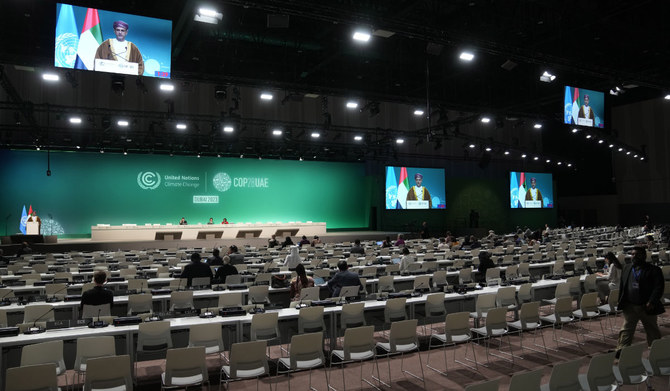Desertification crisis demands world’s attention

https://arab.news/g8g8t
As the COP28 climate change summit progresses in Dubai, one can only hope that negotiators from various parts of the world have taken note of a report released at the beginning of the conference warning the world about the rapid rise in desertification caused by human activities.
Calling it a global emergency, the report, prepared by the UN Convention to Combat Desertification, is explicit about the severity of the problem in terms of the rate of rise in desertification, as well as how widespread the problem has become.
The UN is right to raise the alarm over desertification, as few, if any, hazards claim more lives, cause more economic loss or affect more sectors of society than drought and desertification. Moreover, unlike a flash flood or rise in pollution, which are clearly visible and their impact is felt rapidly by the affected people, desertification and drought are silent killers. They advance slowly and without any dramatic effect in the beginning, but ultimately lead to severe and prolonged damage, from which countries or regions can take years to recover.
The report highlights the urgency of the crisis and the need to address this challenge immediately and at a global level. As per the report, the entire world seems threatened by drought and desertification. As much as 20 percent of the Chinese population will face more frequent moderate to severe droughts this century, while by the year 2100 there is likely to be an 80 percent increase in drought intensity in China. Meanwhile, 630,000 sq. km of Europe was hit by drought last year, as was about 5 percent of contiguous land in the US, while the La Plata basin in Brazil and Argentina experienced its worst drought in 78 years.
The report includes data from all other parts of the world, which should be more than enough to convince any skeptics of the scale of the problem.
It is also very clear about the cause of the problem. Most, if not all, of the increase in droughts and desertification is due to human activity.
The first issue is the cutting down of forests and trees. The destruction of green cover not only makes areas drier and dustier, but also has a dramatic impact on rainfall.
The second biggest reason is the inordinately large rise in water consumption and wastage. With humans sucking a rapidly increasing amount of water from natural bodies like rivers and lakes, there has been a significant drop in availability. Global freshwater usage rose about 33 percent from just over 3 trillion cubic meters in 1980 to about 4.07 trillion cubic meters in 2010.
Large chunks of this have been drawn from groundwater, leading to a dramatic fall in groundwater tables in many nations. The situation is particularly disturbing in India, China, southern Europe and the western US.
The situation has been exacerbated by irregular rainfall, which is largely due to global warming, once again caused by human activity.
Businesses need to take steps to curtail their water usage and increase the amount of water they reuse.
Ranvir S. Nayar
Irrespective of where they live, few will have failed to notice the drop in water availability or, in extreme cases, seen the rivers and lakes in their neighborhoods dry up.
As it may no longer be possible to undo the damage done to nature by human greed, the world has to look at ways to adapt to the changed situation. Many of the solutions are well known. First is to stop water wastage and cut our consumption of freshwater, irrespective of whether it is being used in homes, factories or on farms.
Second is to look at enhancing the quantum of used water that is reused. Currently, few countries bother to recycle significant amounts of water, even though there are several options. For instance, in the US, less than 0.3 percent of used water is reused, showing the apathy of ordinary citizens as well as municipal officials and businesses. The situation is not much different in most other nations.
Another mitigation and adaptation method that is well within the reach of all of us is to harvest rainwater, which in most cases is lost to evaporation or simply goes into the ground. Harvesting rainwater and renewing water bodies by cleaning and desilting them will not only increase the amount of water that is available, but will also prevent desertification from spreading as it will make the ground more humid and resistant to desertification.
Beyond that, depending on the sector of economic activity, businesses need to take steps to curtail their water usage and increase the amount of water they reuse. In agriculture, farmers should plant drought-resistant crops, as well as those that consume less water. The construction and manufacturing industries also need to curb water wastage and enhance their recycling.
While the developed world may be able to manage the economic resources needed to partly overcome drought-like situations, the situation for poorer nations, notably in Africa and Asia, will certainly require the raising of more money so that they can minimize the impact of desertification and drought.
• Ranvir S. Nayar is the managing editor of Media India Group and founder-director of EIFE.










































